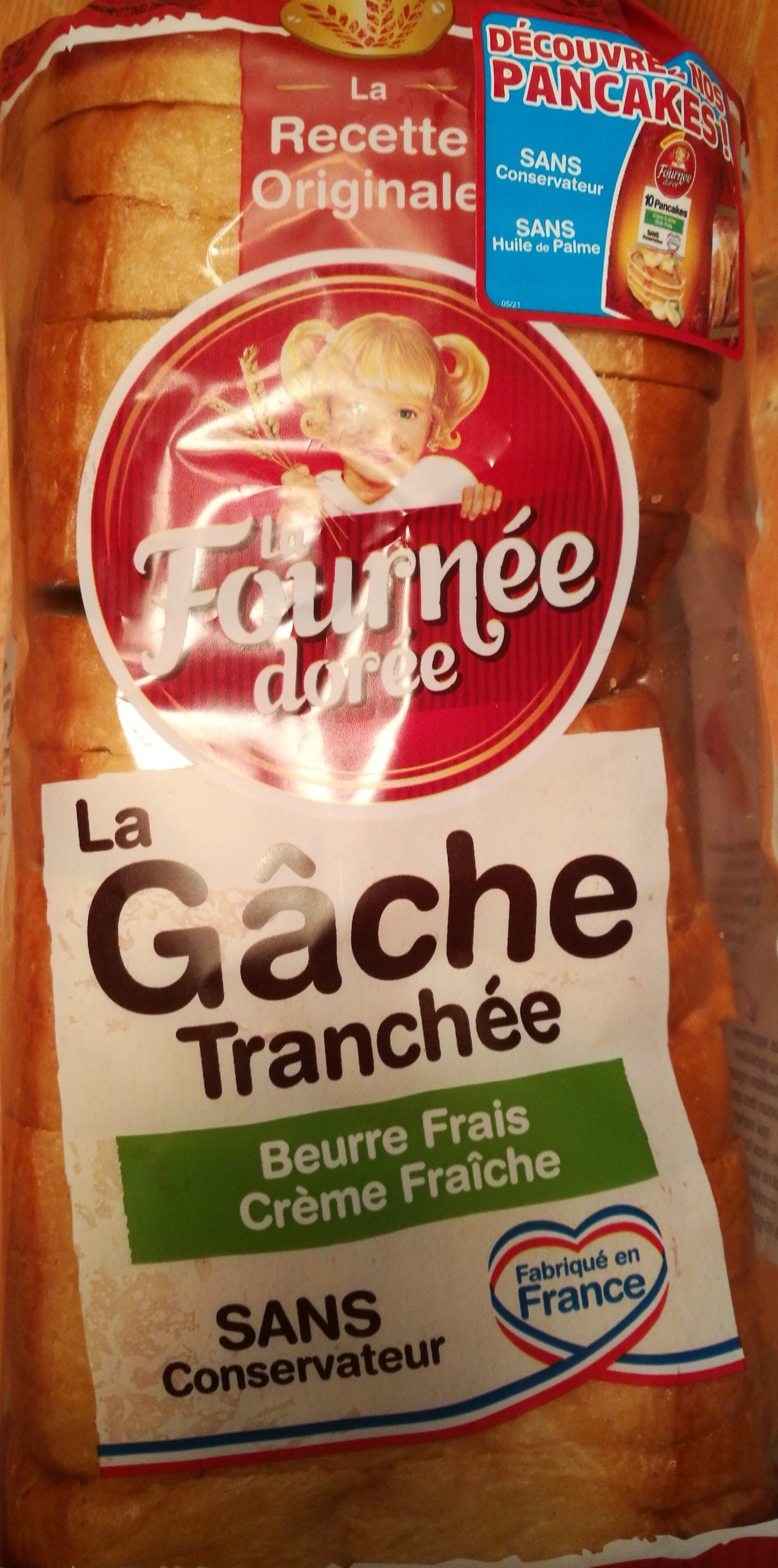La gâche tranchée - La Fournée Dorée - 500 g
Barcode: 3587220002252 (EAN / EAN-13)
Common name: recategorisation du product_id 638259 | excatego:115 | exns:D/18
Quantity: 500 g
Packaging: Plastic, Bag, fr:Film en plastique
Brands: La Fournée Dorée
Categories: Snacks, Sweet snacks, Sweet pastries and pies, Viennoiseries, Brioches, fr:Gâches, Pure butter brioche, fr:Brioches tranchées, fr:Brioches tranchées pur beurre
Labels, certifications, awards:
No preservatives, Green Dot, Made in France, No palm oil, Pure butter
Origin of ingredients: European Union
Manufacturing or processing places: 85150, Vendée, France, Pays de la Loire, La Mothe Achard
Link to the product page on the official site of the producer: https://www.lafourneedoree.fr/produit/la...
Stores: Magasins U, Auchan, carrefour.fr, Leclerc
Countries where sold: France, Germany, Switzerland
Matching with your preferences
Report a problem
Data sources
Product added on by norbert45fr
Last edit of product page on by foodvisor.
Product page also edited by beniben, berenice987, bio15, bvf, charlesnepote, corinnedu47, date-limite-app, driveoff, el-ka-91, fpdsurveys, kiliweb, kmno4s, lafourneedoree, lilouandr, magasins-u, mat0806, mrhalal, nouky20, nutrinet-sante, off.1062fde7-7bcb-4b14-8e76-d95d8fb9c6db, off.69278925-224b-4b41-8a94-d37157c922e4, off.b27f00c4-705a-4776-aaa7-d074dd9b0094, openfoodfacts-contributors, packbot, peter680, poy13, quechoisir, quentinbrd, roboto-app, scanbot, sebleouf, segundo, smoothie-app, teolemon, yuka.RnA0T0Vmb0ZnTnNEbGNKaXhTN1gyTzl3LzZXR2JWR3pDK2N3SUE9PQ, yuka.SEtNWkxvY0VpOGdGdHZZZzNUK0w5K3QyNnJTbUIxcUZjdW9PSVE9PQ, yuka.SFA1YUdZUVRwT1pWd1BFRTBrdmMzZTlLd0ptTVRYdTlEdFVXSVE9PQ, yuka.SGJnNlRwOGF0dnN0dWNBRStEWGw1UDUxbnBUMEJXQ0hDK1k2SVE9PQ, yuka.U2FNY0RvZFJpdGt1bXZRZG9VekZ5dDVsMjVHS1h6K0tlKzRXSWc9PQ, yuka.U3I4NlRiVmUvL1lNc1BkaS9ranI4STFhd28veFJuS1RMdTlPSVE9PQ, yuka.UWFjUVRyd2lsdVkzd3ZJYXBqSEY2djlFeHEyMlVVNjlkOGNOSWc9PQ, yuka.V0k5ZEFweGRsL2dieGN3ODh5SHNvZEZIN3JQelJuMlNlc3dSSVE9PQ, yuka.V0pvcU1aa0FwYVVwbHM4djhFdU8zNDFuM2JXUVlXZXNGYk5QSUE9PQ, yuka.V2JrNEg0TllpL0FMeHRvRzJCT04vZmRweGE2WmVFYU5DZXN3SVE9PQ, yuka.VDZ0YlFLb3NnK0l4aXNRbjNUcnZ5Tk43bW9PTWIwN29FZmMzSVE9PQ, yuka.VzRvd1RJVlFyTVFFdXNBTTBDUG81c0pheGJ5M0IyR2NBTTh4SUE9PQ, yuka.WFBFdVBJWWl1NmRhdmZOait6bnQvNDl3NE0rd1ZrYnVJckFjSVE9PQ, yuka.WGFBWUZab01xL3Nic2N3M3JndUw2UE52d1lHMmUyeUhLTlZOSUE9PQ, yuka.WktvQ01mMG12ZFlFbHNjVjR4bnMrUDhzL0k2MmZWN29LOWM3SVE9PQ, yuka.WnZzbUR2Zy9tLzRieDg4VTBEL1hwYzh2NDVPbVZtbXJjTmNJSWc9PQ, yuka.ZC9reExabysrZjR3Zy9RY295SFQ0c0puMm9mMFJGSzZMcllOSVE9PQ, yuka.ZG9NbUFyOHdyL3RWdmZFQXhBakk2dDVzNjdHWlRFbUZlOVlkSVE9PQ, yuka.ZHJJdE1xRlFpY2tXdThFRnBEM240L0JiNHJhYlRGT0xHL3RKSVE9PQ, yuka.ZmZ3Y0NvMVI5OEV3aFBZdjVnck1vUEIxd2NIMmR6T1BOTXhBSVE9PQ.












